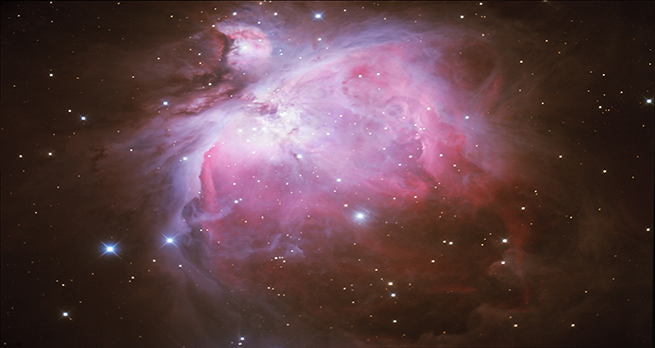Orion Glossary
Special | A | B | C | D | E | F | G | H | I | J | K | L | M | N | O | P | Q | R | S | T | U | V | W | X | Y | Z | ALL
P |
|---|
photosphereThe luminous 'surface' of the Sun (or of other stars). The Sun’s photosphere is about 500 km thick. | |
planetLarge rocky or gaseous bodies in orbit around a star. According to the International Astronomical Union, a planet must meet the following criteria: it is large enough to become spherical under the influence of its own gravity; it orbits a star; it has swept out a clear path on its orbit around the Sun; it is not a satellite of another body. | |
planetary embryoA massive body thought to have formed from the accretion of planetesimals, and which themselves combined to form planets, during the formation of the Solar System. A few planetary embryos remain in the form of the largest asteroids and trans-Neptuinan objects. | |
planetary nebulaThe expanding dust and gas thrown out by a star of similar mass to the Sun as it reaches the end of its life. | |
planetesimalSmall bodies (a few klm in size), that formed from aggregation of dust grains in the early solar nebula and are large enough to attract each other by gravity. | |
protoplanetBodies formed in the early solar system from the accretion of planetary embryos and planetesimals, that are large enough to have undergone differentiation. | |
protostarA collapsing fragment of a molecular cloud that eventually becomes a star. | |
pulsarA rapidly spinning neutron star. As the neutron star spins on its axis, beams of radio emission sweep around the sky like the light from a lighthouse. On Earth, these beams are detected as pulses of radio emission. | |
